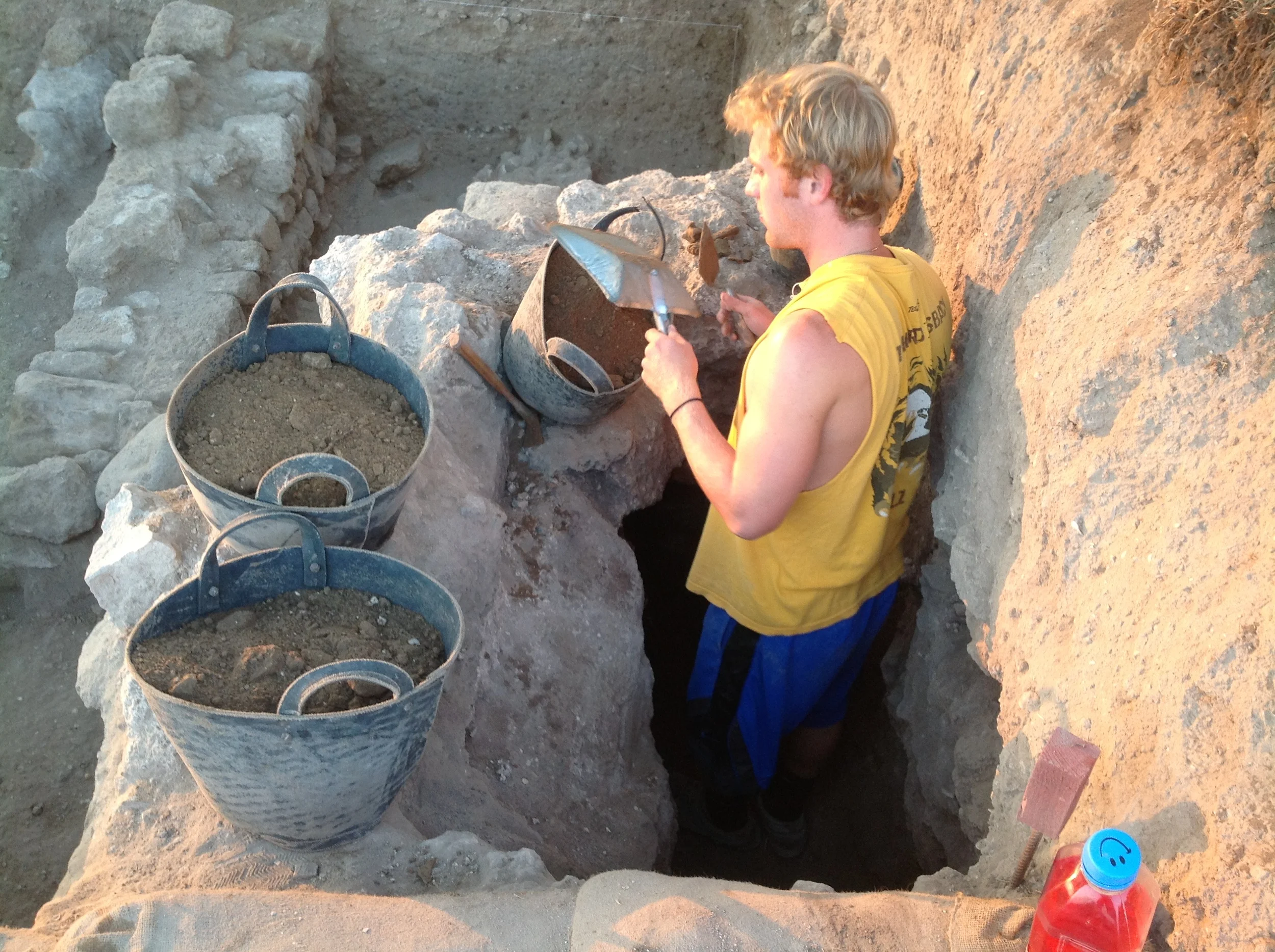One of the great things about archaeology, and there are many, is that you never know what you are going to find or when you'll find it. Case in point, the always infamous "last day of excavation." Archaeologists joke that the most amazing finds are always discovered in the last hours of the last day(s) of excavation thereby putting excavators under extreme pressure to "get it done." We had such a day in Grid 44, albeit on a minor scale, at the end of the 2013 field season which, as it turns out, was the last day of excavation in the grid which is now closed.
All summer long we had stared at the corner of a large building just extending into our excavation area. The majority of the building, of course, remained under the grass. All we could see of this building were two cemented walls forming a corner and a very small space contained within that corner. We decided to dig it. At the top, the space contained a large amount of ash and burned material from nails to cooking pots. Once we got below it, however, we seemed to encounter a large fill that kept going and going as did the walls. We were instructed to keep digging until we hit something. Why? Well, the remains of the building, though fragmentary and not well preserved at all, were indicative of the type of architecture we expected to find on the top of the South Tell. (It was, in other words, not like the residential buildings we actually found.) In the end, we didn't reach the bottom and we never discovered the function of the building. We did, however, start filling in one of the gaps in Ashkelon's history.
Missing from much of the archaeological record of ancient Ashkelon? The Roman period. The 1st- 3rd centuries CE more specifically. As we dug in our little corner, a corner that really didn't look like much, we started finding many large pieces of restorable Roman period pottery; 14 whole or nearly complete vessels to be exact. In addition, we had a number of small finds including the horse head you see above, thought to be part of the handle of a large vessel. It was a great discovery and as we spend more time studying the ceramics it is likely we will know a bit more about Ashkelon in the Roman period. And we owe it all to some last minute digging!


